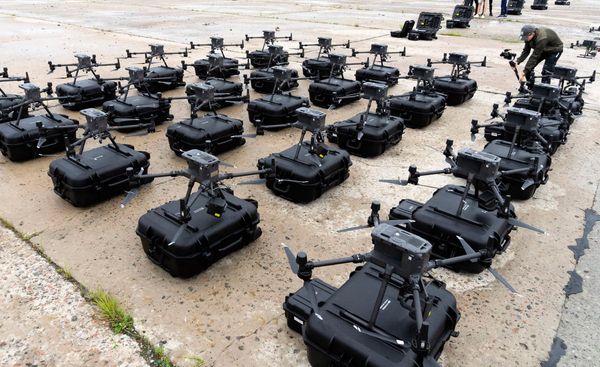
Taiwan’s 2020 election campaigns are in full swing. Although the presidential race has grabbed much media attention, intra-coalition and intra-party intrigues are characterizing the legislative race.
Numerous political parties in both the pan-Green and pan-Blue coalition have emerged to compete in the 2020 elections. The pan-Green coalition is defined more than just by the Democratic Progressive Party (DPP), which currently holds the presidency and a legislative majority. It is made of parties and people who have traditionally favored Taiwanese nationalism and making movements toward the formal establishment of the Taiwanese state. This has pitted them against the pan-Blue coalition, composed mainly of parties and people advocating closer ties with China. The pan-blue coalition is led by the Kuomintang (KMT).
The DPP, the largest party in the pan-green coalition, has been working to both integrate smaller candidates and cooperate with allies in local races. This year’s election, however, is marked by subtle changes in the power dynamic of the coalition. Since Taiwan has a two-vote system for the legislative election — one for local candidates and another for the party list — the DPP is competing with many of the pan-green parties it is cooperating with over the party ticket.

Partners or Friends with Benefits?
DPP and its allies have found most room for cooperation in the local elections. Given the nature of the single-member constituency of district legislative elections, smaller parties often have a hard time measuring up against the DPP in terms of resources and support.
Currently, three smaller parties in the pan-green camp are cooperating with the DPP in a variety of ways locally.
The Taiwan Statebuilding Party (台灣基進, TSP) is DPP’s most high profile partner. In the Legislative Yuan, TSP and elements of the DPP have cooperated to draft a foreign influence act aimed at combating Chinese influence operations in Taiwan. At the local level, TSP has taken up one of DPP’s “hardship district” in Taichung, fielding popular figure Chen Po-wei (陳柏惟) in a district considered KMT stronghold.
The Green Party (綠黨) is one of the older players in the pan-green camp. The party is mainly represented by Wang Hao-yu (王浩宇), a local legislator in Taoyuan. Wang and the Green party have been active supporters of President Tsai Ing-wen, even before the DPP finalized its nominee. Despite the Green Party’s partnership with the DPP, tensions have emerged since Wang is a controversial figure within the coalition, having been caught spreading disinformation multiple times throughout his political career.
The Social Democratic Party (社會民主黨, SDP), a longtime DPP partner, is cooperating with the DPP on the closest level. SDP’s leader, Wild Lilies activist Fan Yun (范雲), has been included as number three on DPP’s party list this year. The SDP has not nominated any candidates for district races nor submitted its own party list. This likely means that the party will be integrated into the DPP.
With the exception of the SDP, pan-green partners of the DPP are all simultaneously competing with the DPP over the party vote. However, many small party candidates were frustrated by DPP Secretary-General Luo Wen-jia (羅文嘉)’s plea for voters to not “waste a vote” on smaller parties that have not polled high enough.
Smaller parties are racing for two benchmarks. Though it is uncertain whether TSP and Green Party will be able to take the minimum 5 percent of all party votes to enter the Legislative Yuan, they will receive government funding if they manage to take just 3.5 percent. Parties that fail to make the 3.5 percent mark would have a much harder time surviving until the next election cycle.

Once Partners, Now Competitors
The New Power Party (NPP), once a DPP ally in the 2016 election, turned competitor since a split over DPP’s labor policy.
The NPP is now competing in major races such as the legislator seat for Hsinchu city, currently occupied by DPP whip Ker Chien-Ming (柯建銘) but opened up to competition since Ker has been nominated as a party list candidate.
Previously, the party was divided on whether it would compete or cooperate with the DPP. Anti-DPP elements within the party, led by former chairman Huang Kuo-chang (黃國昌), eventually led to the departure of two district legislators from the NPP and a major rift in the party.
Freddy Lim (林昶佐) and Hung Tzu-yung (洪慈庸) both ran under the NPP in 2016 and won in KMT strongholds. They are now running as independents cooperating with the DPP. Other NPP candidates are facing strong DPP pressure in their races given the party’s split. In districts like Hsinchu City and New Taipei’s 12th district, NPP candidates are competing with the DPP over progressive voters in a three-way race with the KMT. New Taipei’s 12th district is currently occupied by former NPP chairman Huang Kuo-chang, who won the district in 2016 but has much neglected his electorate.
The “deep-greens,” determined Taiwanese nationalists, have also briefly grabbed the attention of the media. Consisting of associates of former president Chen Shui-bian (陳水扁) and other DPP old guards, this faction within the pan-Green coalition has stirred up controversies such as attempts to discredit President Tsai’s academic credentials.
More recently, however, reconciliation is happening between the deep greens and the mainstream DPP party. In the beginning of 2019, Taiwanese nationalists such as Koo Kuan-min (辜寬敏) publicly demanded President Tsai Ing-wen (蔡英文) to resign, but some have since pulled back their hardline anti-Tsai attitude. The inclusion of two former premiers closely associated with the deep-greens in the DPP ticket — Yu Shyi-kun (游錫堃) on number seven of the DPP party list and William Lai (賴清德) as vice president — can be seen as necessary steps to prevent another deep-green rebellion against the DPP mainstream.

Struggles of smaller pan-Green parties
The design of Taiwan’s electoral system has inevitably pitted many of DPP’s partners against themselves, as the DPP becomes increasingly a big-tent party. Smaller parties are facing more pressure to either cooperate with the DPP or face defeat. The two district legislators who quit NPP to cooperate with the DPP show how the party’s decision to compete rather than cooperate on a party-wide basis can disproportionately hurt certain members of the party.
What is also becoming more evident is the development of democratic pluralism in Taiwan. We are seeing more diversification of political opinions in both the pan-Blue and pan-Green camp, with the DPP and KMT no longer commanding as much influence within their respective coalitions.
In a sense, “camps” and “coalitions” are losing their importance. The pan-Green camp is moving away from being centered around the push for formal Taiwanese statehood, and alliances are instead forming around topics like combating Chinese influence operations and social justice. Parties that do not identify with any of the two “camps,” like the NPP and the Taiwan People’s Party (TPP) established by Taipei Mayor Ko Wen-je (柯文哲), represent both the rise of populism and the consolidation of leftist and centrist politics in Taiwan’s political environment away from nationalism.
The traditionally left-of-center pan-Green coalition is facing competition from parties that are not on the traditional green-blue spectrum and are unaffiliated with either of the two establishment parties. As this happens, the DPP is realigning itself to integrate as much of the pan-Green parties as it could, while smaller parties both work with the DPP for electoral benefits and compete for the party ticket to retain their own party platforms.
As Taiwan’s 2020 election draws near, the imperfect partnership between the DPP and its partners will continue to be tested for cohesion. The DPP will likely be competing primarily against the NPP and TPP this year for legislative seats, rather than against its traditional rival, the KMT.
READ NEXT: Could a Taiwanese President Commit Treason and Get Away With It?
TNL Editor: Daphne K. Lee (@thenewslensintl)
If you enjoyed this article and want to receive more story updates in your news feed, please be sure to follow our Facebook.







